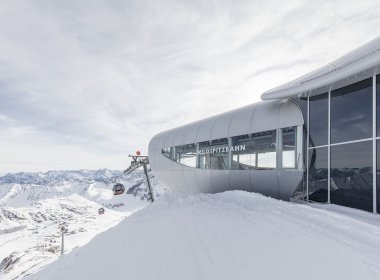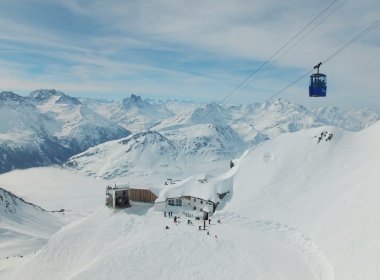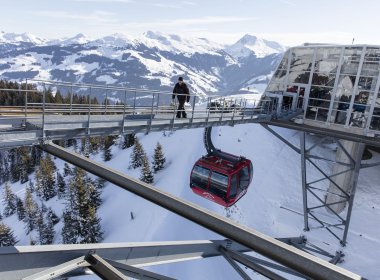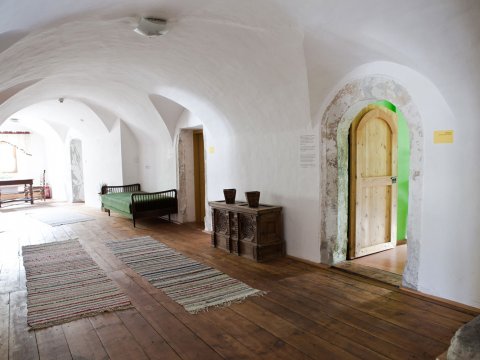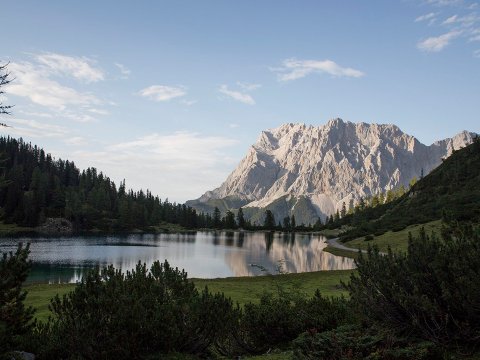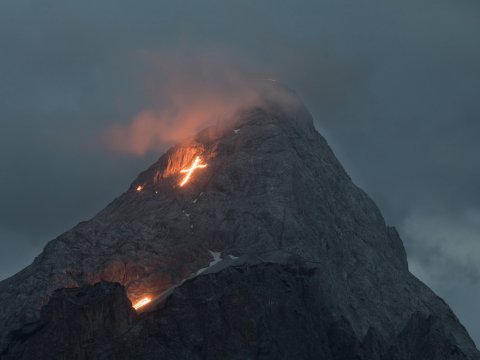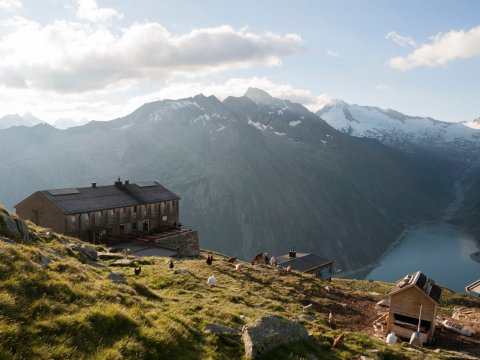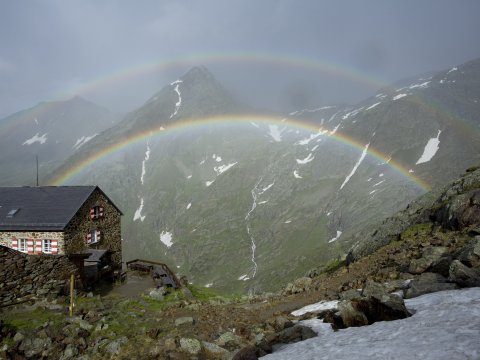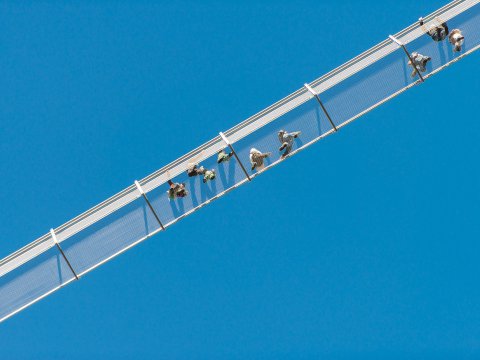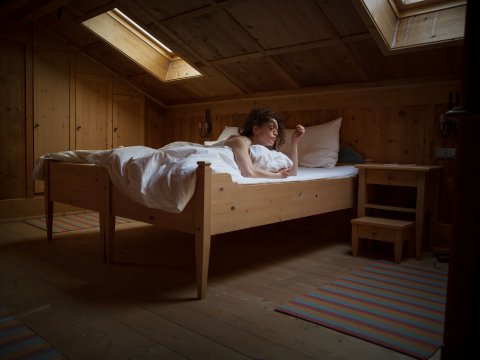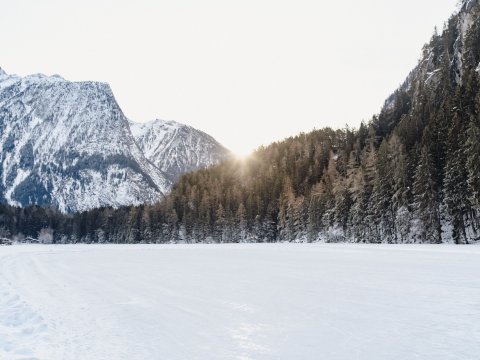Tirol’s Most Spectacular Cable Cars – the Eisgratbahn on the Stubai Glacier
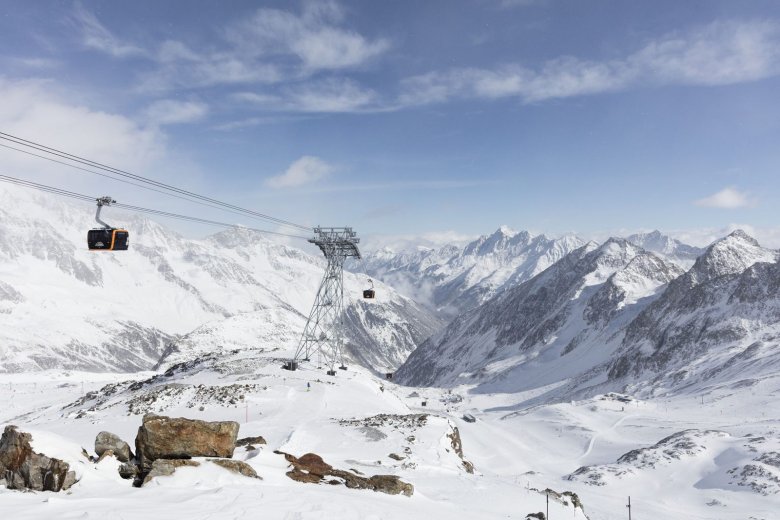
It’s just before seven o’clock in the morning when we get to the large car park at the bottom of the new Eisgratbahn cable car. We are all alone. A biting wind whistles around our ears, while in the valley below a thick layer of fog clings to the treeline. Alone between the huge avalanche protection barriers reaching ten metres into the sky, it is an almost apocalyptic atmosphere. The only sign of life we can see is the faint outline of a snowplough trying valiantly to clear the masses of white gold.
We decide to wait inside the warm car and admire the architecture of the cable car station, which blends in perfectly with its alpine surroundings. I think back to my last visit to the Stubai Glacier in the winter of 2015. Back then we had to park at a separate location and take a shuttle bus to the 44-year-old cable car, where we were greeted by a large queue of skiers and snowboarders. With the growing popularity of the resort, the time had come for a new cable car. The result? A stunning state-of-the-art piece of technology costing €64 million – more than any other ski resort cable car ever built.
We are suddenly torn from our daydreaming by a sharp knock on the car window. It’s Andreas Kleinlercher, the man in charge of the lifts and cable cars on the Stubai Glacier. He has kindly agreed to show us around what is currently the most exclusive cable car in Tirol. We get our equipment out of the car and walk over to the station, where the doors are already half-open. We hop onto the first gondola of the day and settle down next to the friendly members of staff who will spend the next eight hours or so operating the lifts on the glacier.
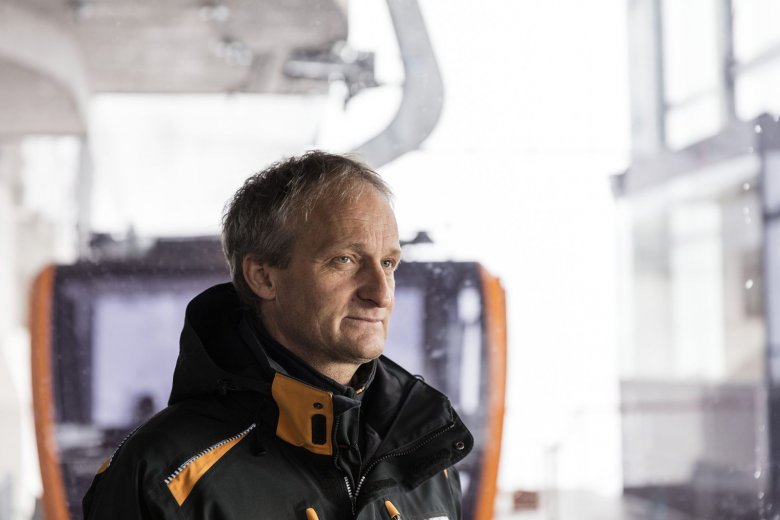


“Despite all the hard work it has been more than worth it,” explains Andreas with a wide smile. “The new Eisgratbahn cable car makes the whole resort much calmer. Skiers and snowboarders are relaxed when they arrive in the resort and can get straight out onto the pistes without waiting. That also means that people spread around the resort more quickly than before.”
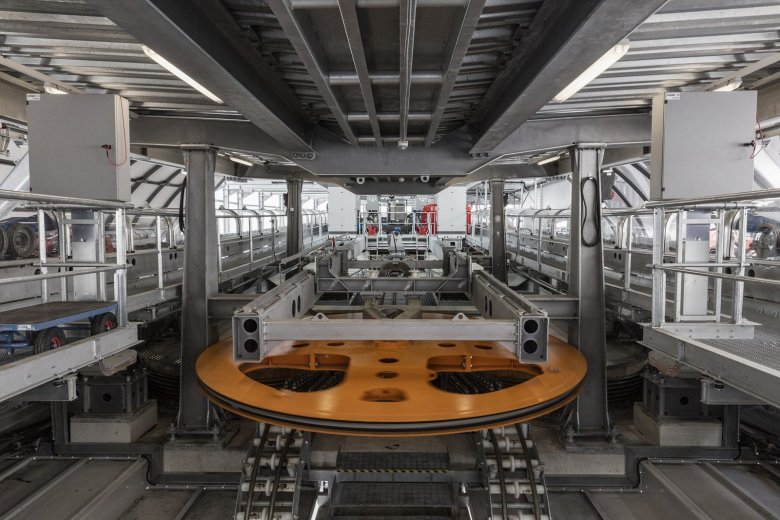
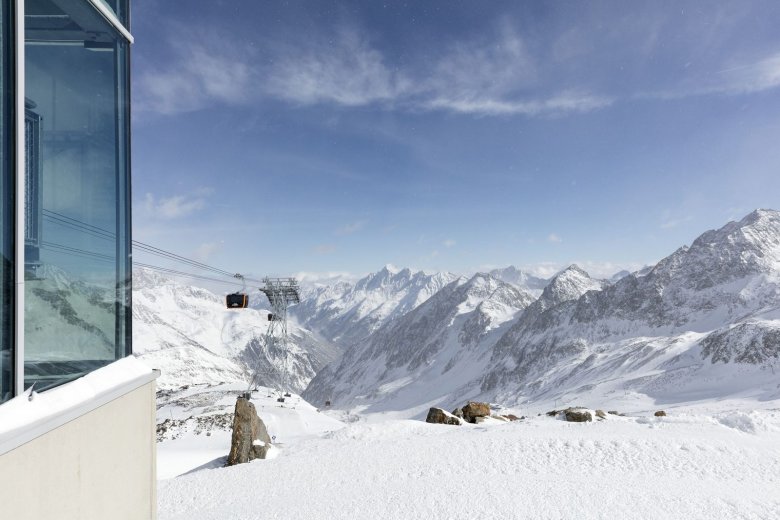
The handful of guests who were brave enough to join us in our gondola despite the presence of a TV camera confirm what Andreas has told us as they settle down in their leather seats, log onto the free wireless internet on their smartphones and enjoy the views through the slightly tinted windows.
Relaxed, happy guests also mean less stress for the resort’s staff. One of them is Eva-Maria Schulze. The 28-year-old is the only female engineer working on a cable car of this size. We meet her in the control room of the Eisgratbahn, located at the mid-way station. With its wall of monitors and touchscreen technology it looks like something from a space shuttle programme. “From here I can control the whole cable car,” she explains, adding: “This is absolute state of the art. I was involved in the building phase and now have the privilege of controlling the technical side of operations.” Eva originally trained as a pastry chef but soon realised that her passion lay elsewhere. “It just wasn’t my kind of thing. I need technology and nature – and I love being outdoors. Those are the things that make me happy, so this is the perfect job for me. Who knows, maybe one day I will become the first female head engineer of a cable car like this.”
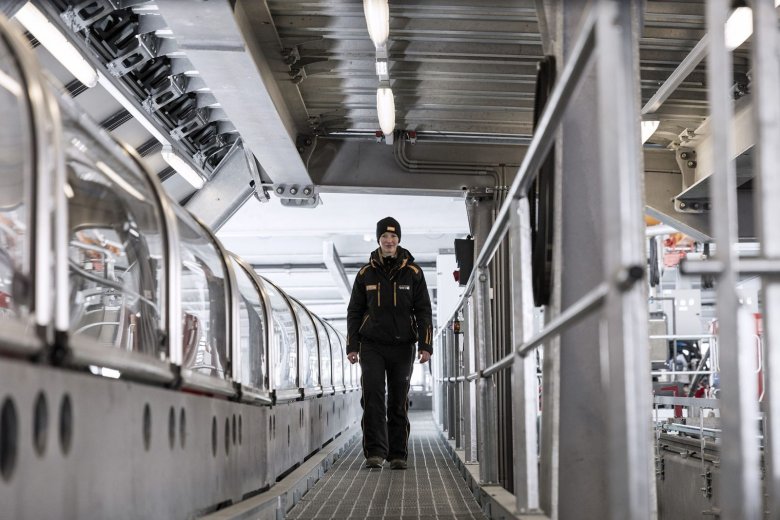
Together we climb up into the motor room, where Eva takes us through the complex technology. As we carefully walk across the narrow gangways, she stops every now and then to check the oil level or the air pressure. Watching her work, there is no doubt that the Eisgratbahn cable car is in good hands. It is then time to go out onto one of the huge pillars in front of the station. As they arrive, the gondolas whizz past beneath our feet and appear much larger when seen from above. In total there are 48 gondolas with a transport capacity of 3,000 people per hour.
By now the wind has died down and there are just a few white clouds in the deep blue sky. It is time, we decide, to get out our camera drone and do some filming. There is no better way to capture the enormous dimensions of the cable car: 4.7 kilometres from the bottom at 1,697m to the top at 2,900m. Incredibly, there are just seven supporting pillars between the stations – the old two-wire cable car was just 4.1km long but required 11 pillars.

A fun and educational day draws to a close. Before the lifts shut, we want to get in a few runs. On the way down we stop off at the Neustift Ski School, where owner Wolfgang sells a selection of fruit brandies and schnapps. After tasting one or two, we decide to buy a bottle of the apricot schnapps – the “perfume of the Middle Ages”, according to Wolfgang. We continue all the way down to the bottom of the resort, looking forward to sampling more of the local produce that evening but also knowing that we need to be up early again the next day. Our destination? Sölden, home to the cable car with the largest transport capacity in the world: the Giggijochbahn.
—
„The invention of lifts and cable cars has made many mountains accessible to everyone, not just hikers and climbers. In this series we showcase six extraordinary cable cars in Tirol, each unique in its own individual way.“










